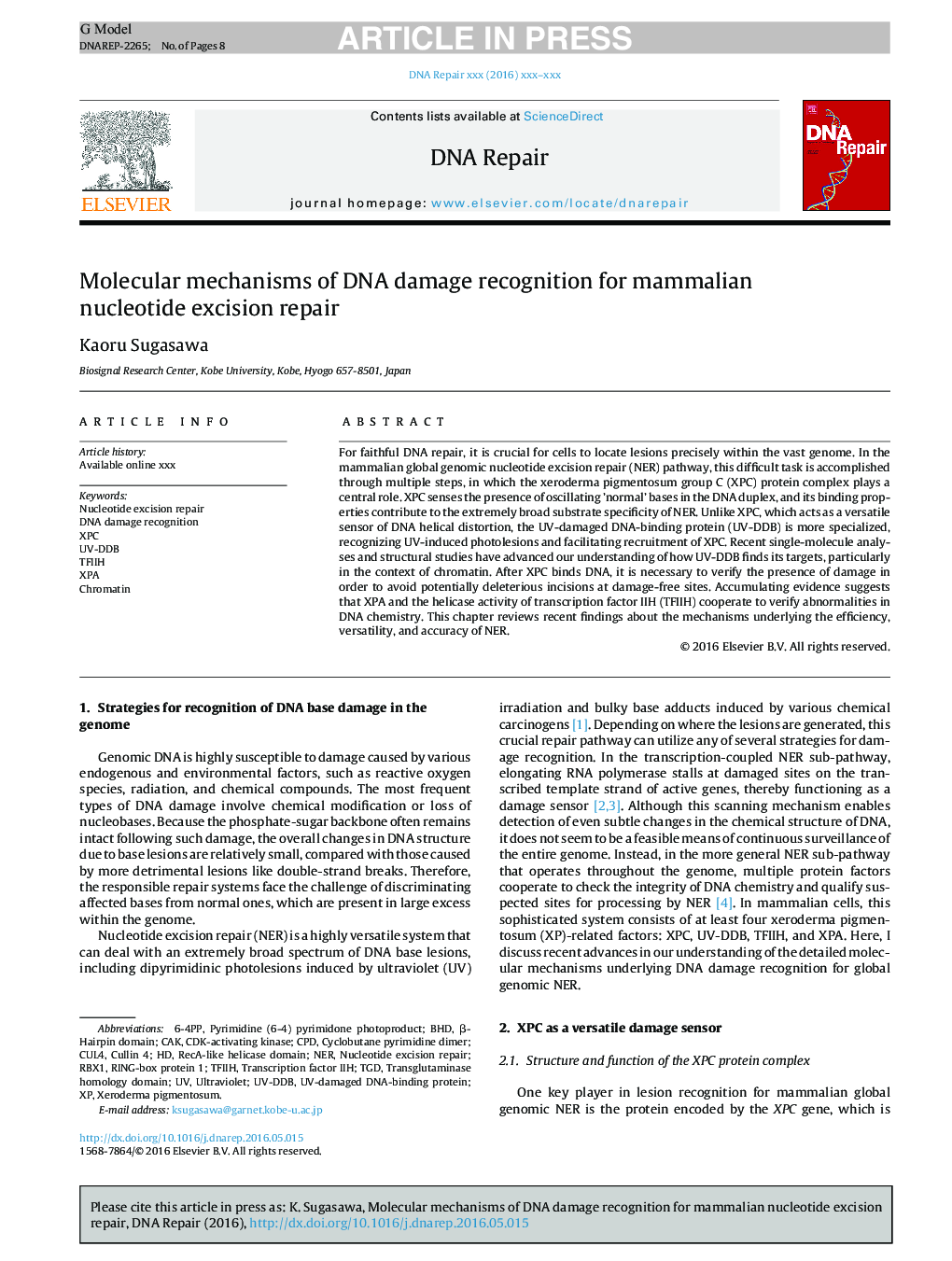| کد مقاله | کد نشریه | سال انتشار | مقاله انگلیسی | نسخه تمام متن |
|---|---|---|---|---|
| 8320487 | 1539384 | 2016 | 8 صفحه PDF | دانلود رایگان |
عنوان انگلیسی مقاله ISI
Molecular mechanisms of DNA damage recognition for mammalian nucleotide excision repair
دانلود مقاله + سفارش ترجمه
دانلود مقاله ISI انگلیسی
رایگان برای ایرانیان
کلمات کلیدی
TFIIHpyrimidine (6-4) pyrimidone photoproductDNA damage recognitionCullin 4UV-DDBtgDCAKCul4XPAtranscription factor IIHXPC6-4PPBHDRBX1CDK-activating kinase - CDK فعال کینازcpd - CPDNER - DOWNxeroderma pigmentosum - pigmentosum xerodermaUltraviolet - اشعه فرابنفشnucleotide excision repair - تعمیر مجدد نوکلئوتیدیcyclobutane pyrimidine dimer - دییریر پیریمیدین cyclobutaneChromatin - کروماتین
موضوعات مرتبط
علوم زیستی و بیوفناوری
بیوشیمی، ژنتیک و زیست شناسی مولکولی
زیست شیمی
پیش نمایش صفحه اول مقاله

چکیده انگلیسی
For faithful DNA repair, it is crucial for cells to locate lesions precisely within the vast genome. In the mammalian global genomic nucleotide excision repair (NER) pathway, this difficult task is accomplished through multiple steps, in which the xeroderma pigmentosum group C (XPC) protein complex plays a central role. XPC senses the presence of oscillating 'normal' bases in the DNA duplex, and its binding properties contribute to the extremely broad substrate specificity of NER. Unlike XPC, which acts as a versatile sensor of DNA helical distortion, the UV-damaged DNA-binding protein (UV-DDB) is more specialized, recognizing UV-induced photolesions and facilitating recruitment of XPC. Recent single-molecule analyses and structural studies have advanced our understanding of how UV-DDB finds its targets, particularly in the context of chromatin. After XPC binds DNA, it is necessary to verify the presence of damage in order to avoid potentially deleterious incisions at damage-free sites. Accumulating evidence suggests that XPA and the helicase activity of transcription factor IIH (TFIIH) cooperate to verify abnormalities in DNA chemistry. This chapter reviews recent findings about the mechanisms underlying the efficiency, versatility, and accuracy of NER.
ناشر
Database: Elsevier - ScienceDirect (ساینس دایرکت)
Journal: DNA Repair - Volume 44, August 2016, Pages 110-117
Journal: DNA Repair - Volume 44, August 2016, Pages 110-117
نویسندگان
Kaoru Sugasawa,